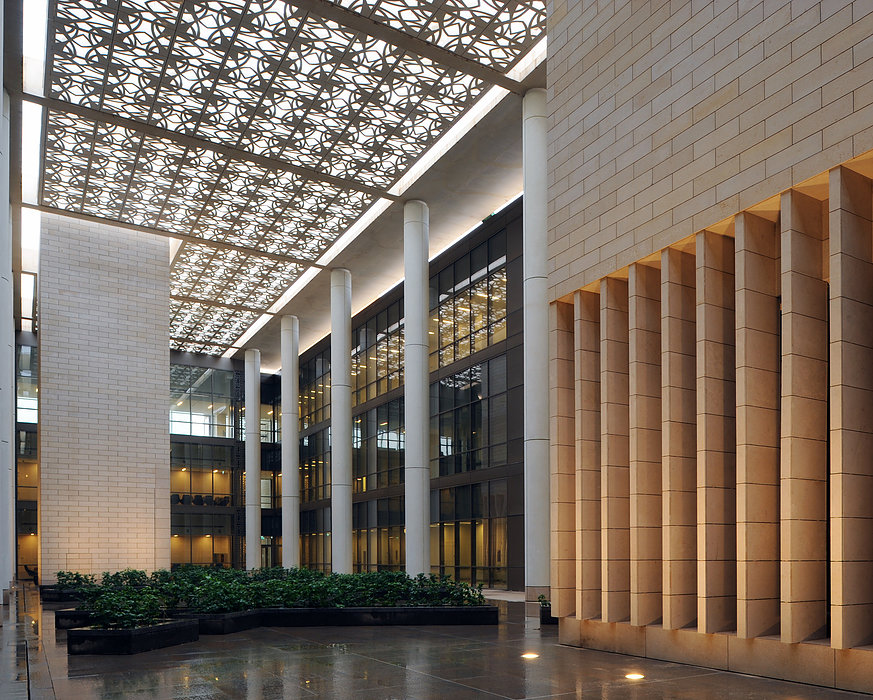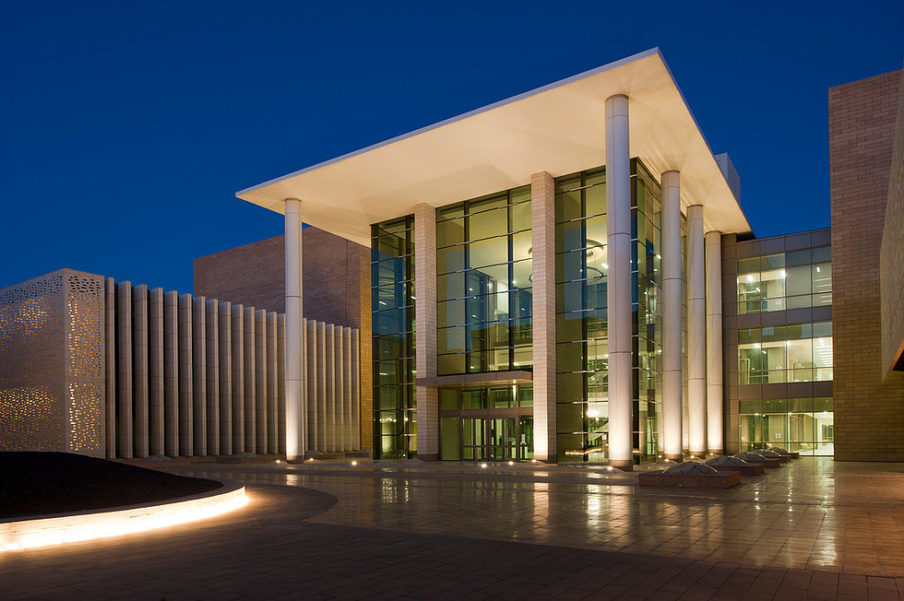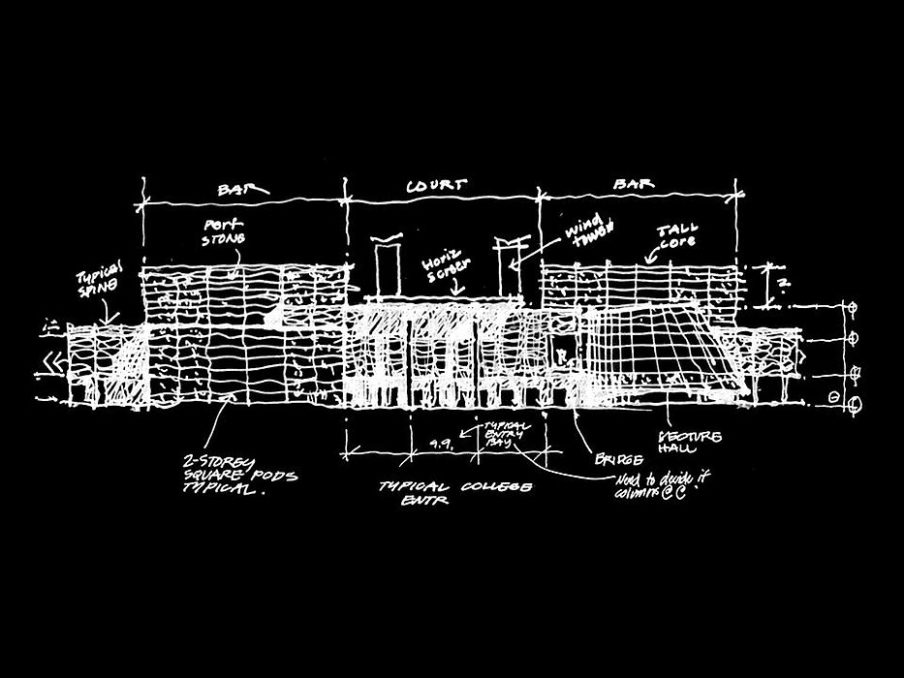Health Science and Research Campus


A Bold Gesture: With campuses each building has to stand out yet still fit into the overall aesthetic of the University. Designers provide nuance to the parts of the project they work on to help create that uniqueness. Williams provides a modern research facility but incorporates a design motifs that references tradition and culture from the region.
© Allison Grace Williams
The Master Plan
This linear commons, at approximately 3 kilometers long, is equal to the length of New York City’s Central Park. The individual colleges are organized around intimate courtyards and significant common buildings (such as libraries, student unions, dining halls and grand lecture rooms.) Prayer halls are dispersed throughout the academic core. Gateways and portals lead into the central commons and the hospital from an elevated Automated People Mover (APM) that surrounds the academic core. Recreational and K-12 facilities are located outside of the academic core in close proximity to residential areas.
The cultural requirements surrounding the separation of sexes is a central tenet of the design. Within the academic core, only the hospital and research components are co-ed. Traditional Islamic architectural screen elements (mashrabiy’yah) not only provide an outer layer of shade and protection from the sun but also allow women visual access to exterior spaces without being viewed. The arid conditions and intense heat of the region promoted innovative sustainable concepts including solar power, water re-use, regional planting, and wind towers that naturally cool outdoor courtyards. The campus is remarkable not only for its size and speed of design, but is exemplary in that all major buildings are pursuing LEED certification.

Conceptual Sketch: Design is an iterative process that often begins with gestural sketches. These representational techniques can allow the designer to explore a range of concepts that can serve as the conceptual blueprint for the project.
© Allison Grace Williams
The details are a narrative of culture, tradition, religious beliefs, civic space, and environmental response.
Allison Grace Williams FAIA while Design Principal with Perkins+Will on designing the Health Sciences and Research Campus Component

The Beauty is in the Details: Designers often shift from the macro-level of a design project to the micro-level, and often hyper-micro scales at times. The consideration that goes into every space they create is meticulous and underscores the complex richness design provides.
© Allison Grace Williams
The Health Sciences and Research Campus
The Health Sciences campus provides female students at PNU a diverse field of educational opportunities for those interested in the medical field. The campus includes individual professional Schools of Medicine, Nursing, Clinical Skills, Applied Medicine, Dentistry, Pharmacy, Physiotherapy, and Basic Sciences in addition to a Research Center and a Student Amenities building. Student Amenities space is the social hub shared by all the schools and is a place of engagement for students, faculty, administration and researchers alike. The built up area comprises approximately 2.5M square feet about 20% of the entire educational facilities at PNU.
Overall the architecture at PNU explores ideas of separation, threshold, transparency, pattern, and sequence and makes metaphor between the concept of the building screen and the women’s veil, the symbolic, visible indication of the transition from childhood to womanhood. As part of the formal sequence through the campus, young female students cross a clear threshold between mixed-gender public spaces and private places for women, establishing the academic core as a place not only of learning but as a symbolic unveiling of opportunity. The details are a narrative of culture, tradition, religious beliefs, civic space, and environmental response.
The Health Sciences and Research Campus component,
by Allison Grace Williams FAIA while Design Principal with Perkins+Will

Juxtapositions of form, pattern, and function define the aesthetic-making process designers undertake. Contrasts between solid and void, light and shadow, warm and cold, uniform and variegated when incorporated into a design system create a rich sensory experience.
© Allison Grace Williams
Source
Images and Project Narrative contributed by Allison Grace Williams